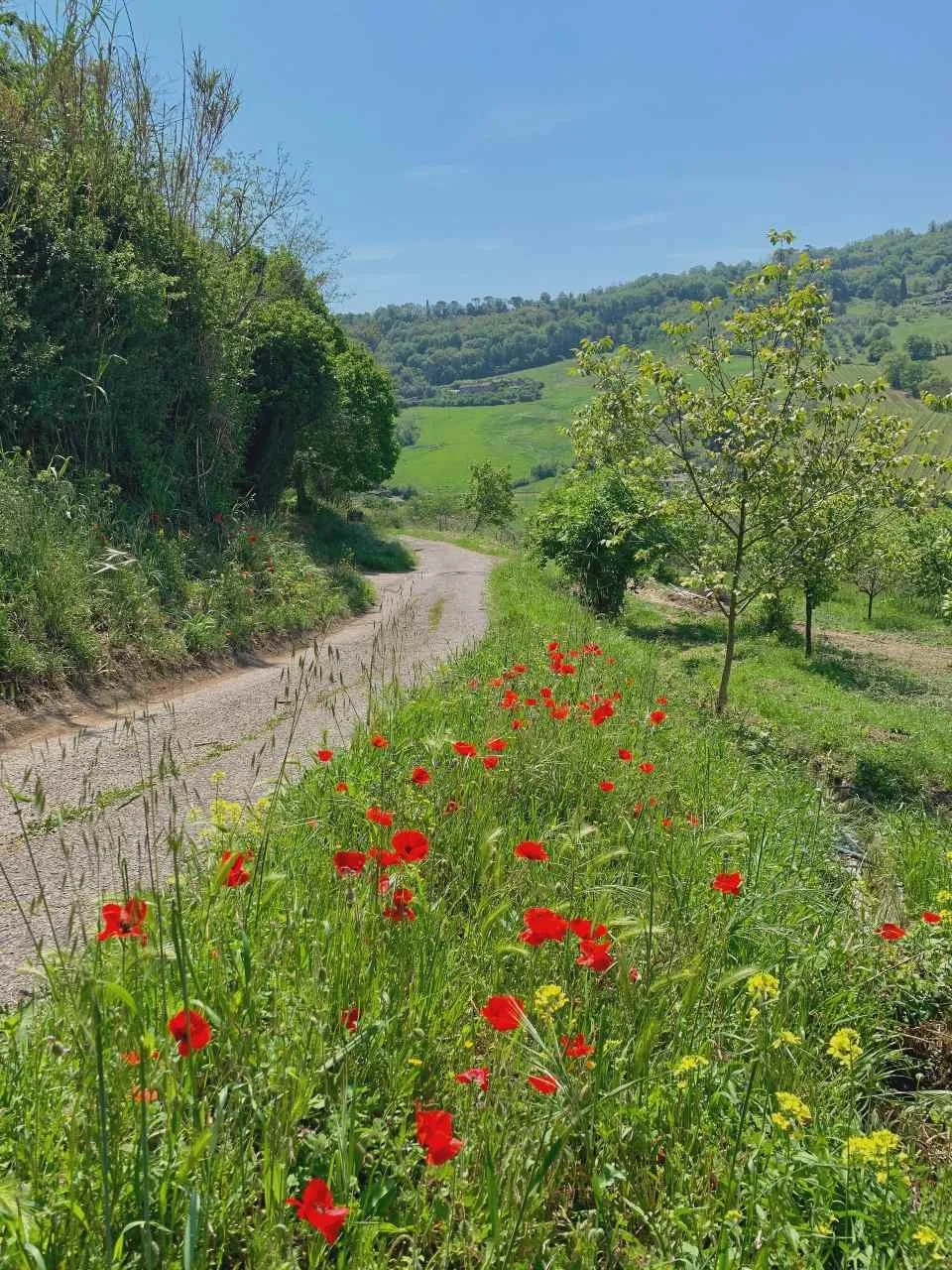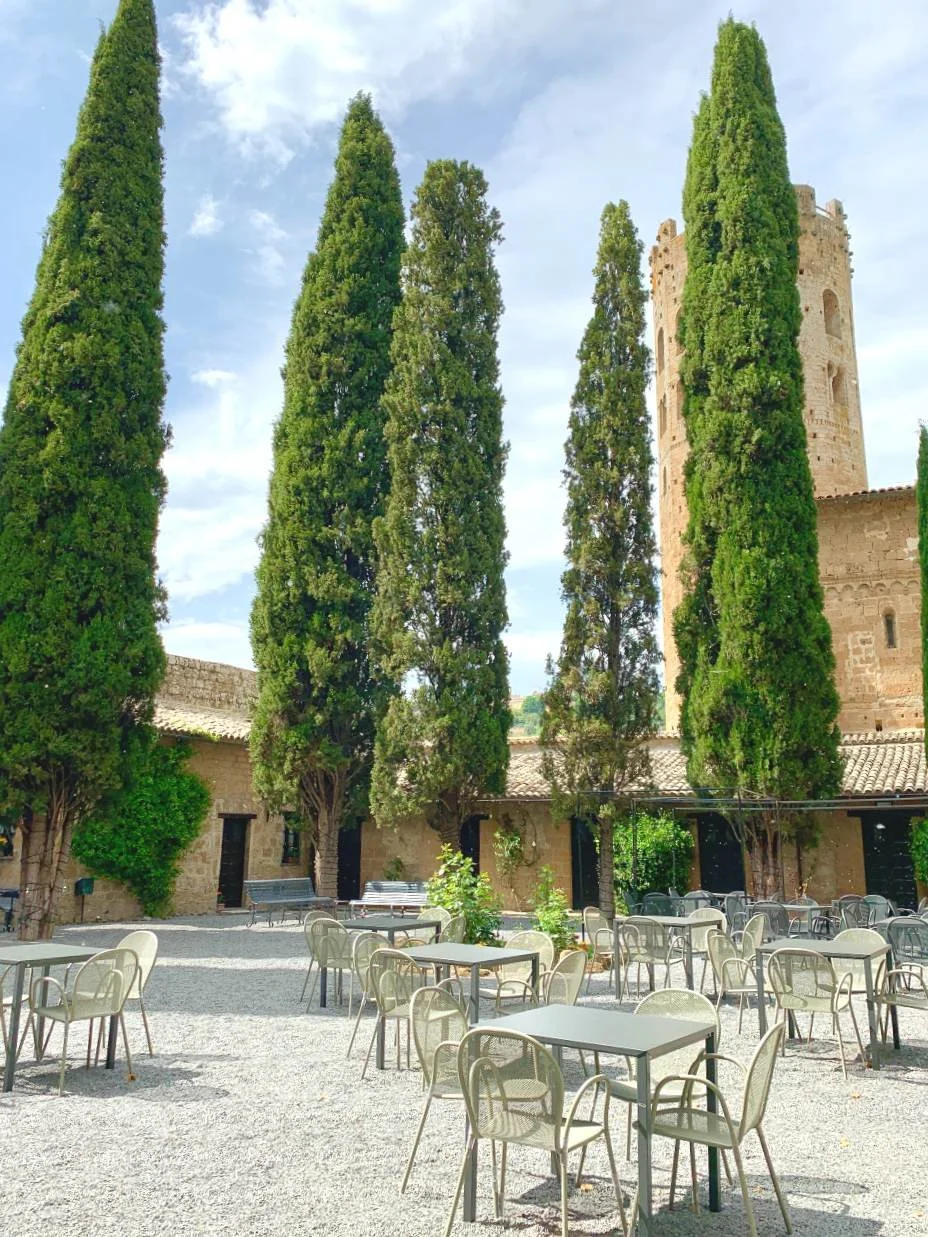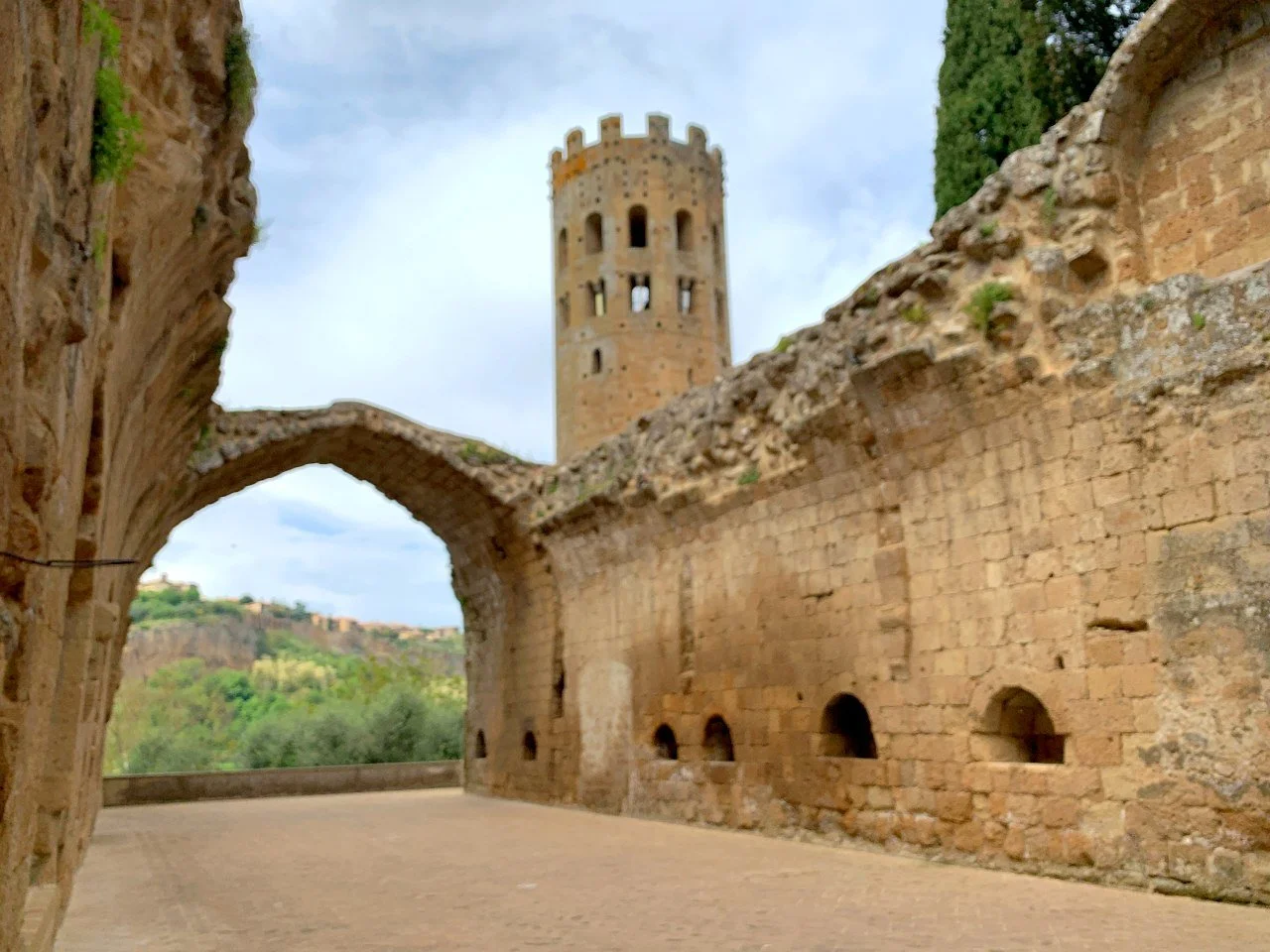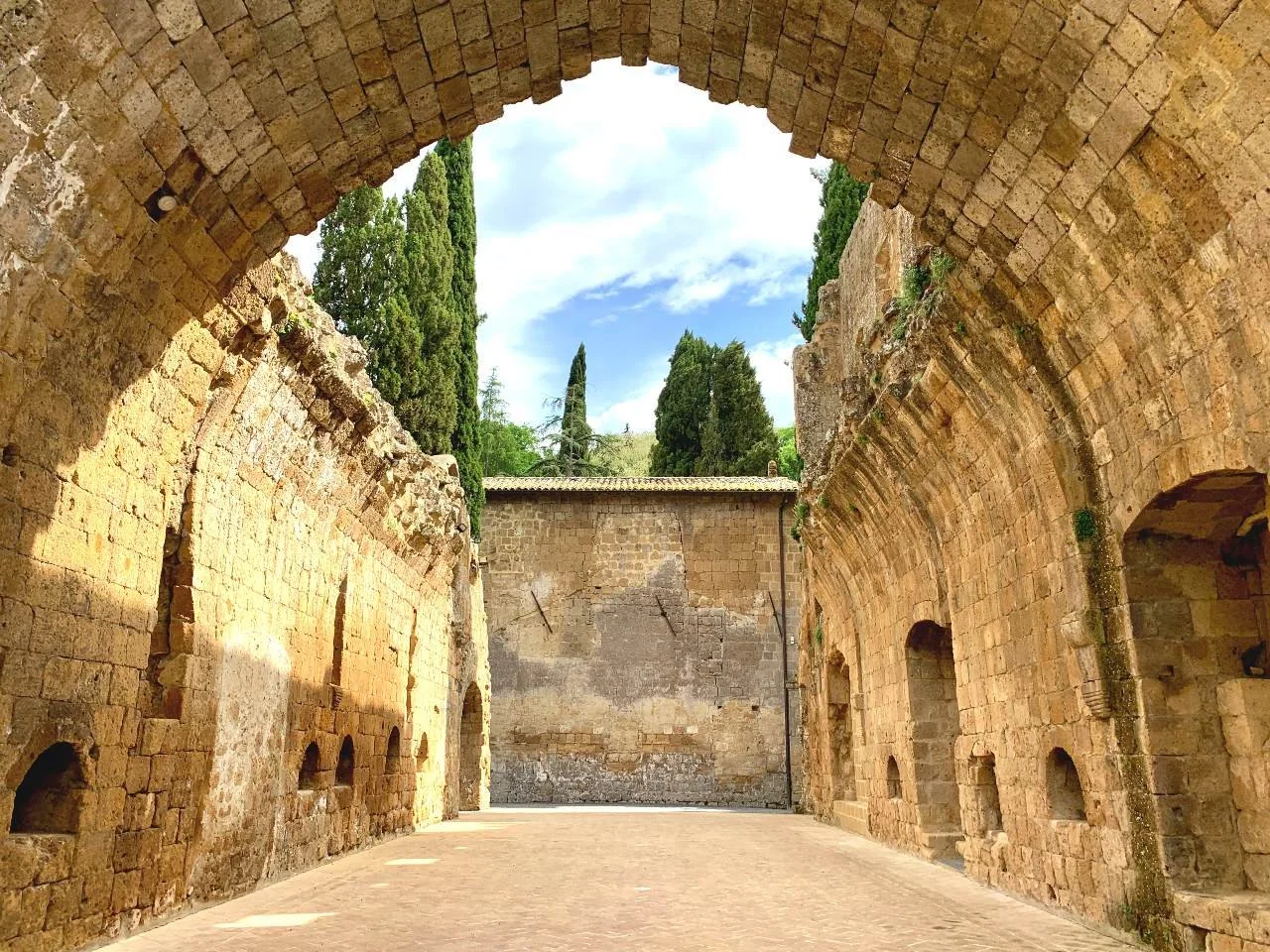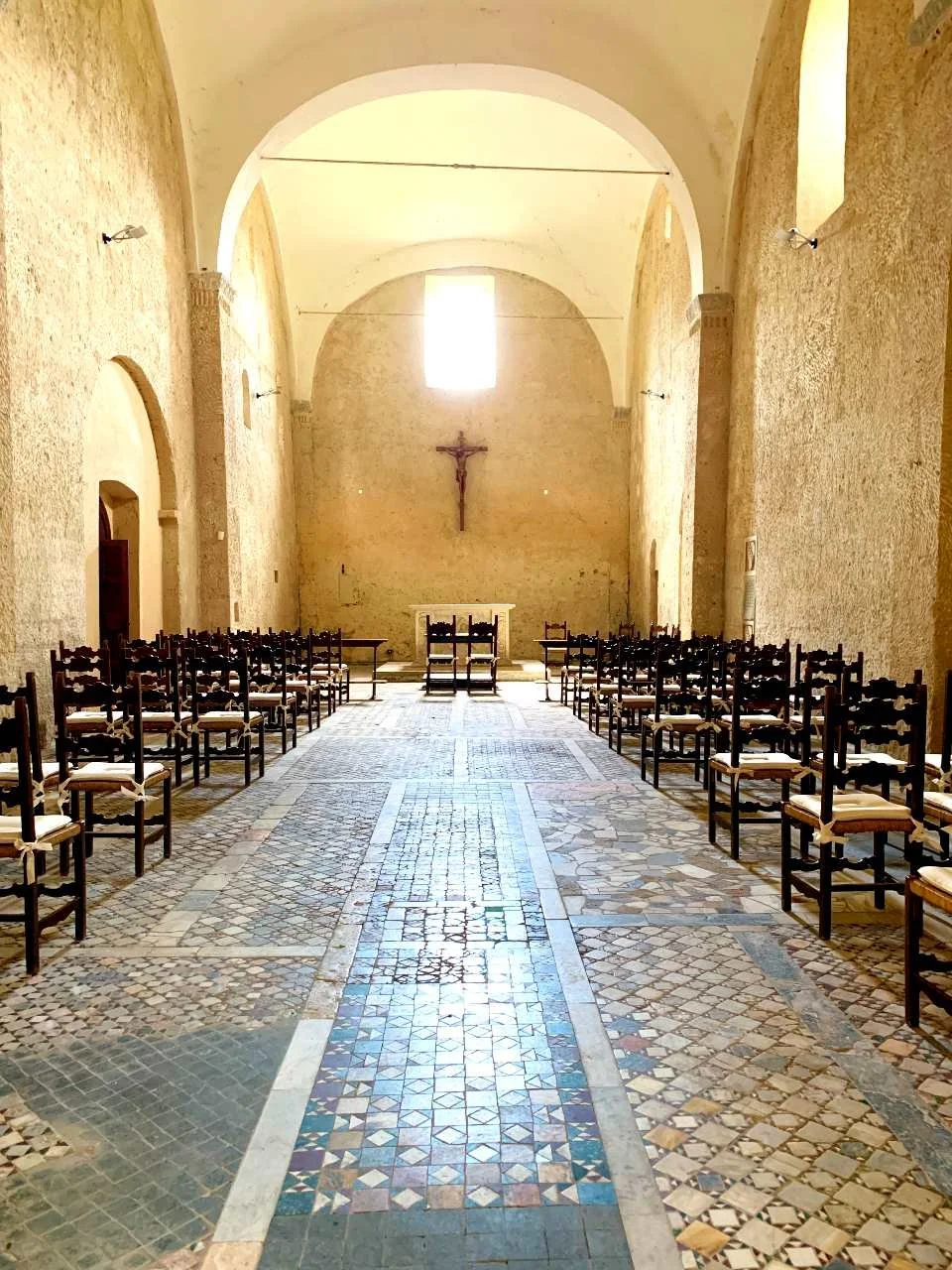Sunday walk to La Badia
Sunday afternoon at a former monastery
Looking west from the Orvieto cliff top, one can see a silhouette of a former monastery right above the vast vineyard of grapes that make the famous Orvieto Classico wine. Built in the 6th century and restored in the 12th century, the former monastery with a dodecagonal tower was owned by an Umbrian nobleman for almost 300 years. In the 1960s it was converted to a 4-star hotel. The locals call the buildings of the hamlet “La Badia.”
From the cliff of Orvieto, it takes about 30 minutes to reach the monastery, and the distance is perfect for a leisurely stroll. Although the return trip up the hill is quite strenuous, the winding country road is beautiful, with bright red poppies decorating the path. As one walks up the hill along the side of the vineyard, the entrance to La Badia appears in a secluded wooded area.
As it was Sunday, the hotel guests were sightseeing in Orvieto, and the grounds were unusually quiet. The only sounds were the rustling of the wind and my steps on the gravel. The cypress trees, which must be hundreds of years old, are as tall as the tower, and they made the chairs and tables in the courtyard look like miniature toys.
Inside the hotel, it was also quiet, with only one person at the reception. He kindly made me an espresso when I asked for one. I took my espresso cup and settled down at a table under an ancient archway. The only sounds were the wind and the chirping of birds… it was almost too serene; I felt as though I had traveled back in time to the 12th century…
According to the receptionist, the hotel is used for various events, including weddings, against the backdrop of La Badia's mystical beauty. There used to be a restaurant, but it has been closed since the pandemic, and there are no plans to reopen it. What a pity….
If I were a dancer, I would love to dance on this stage, or if I were a cellist, I would place a chair and play music. My imagination flew as I stood on this ruined stage and felt the open sky above.
What is particularly moving is that, in Italy, history becomes an integral part of residents' lives, whether Italian or non-Italian. Each time I sense this magic, I feel blessed with the humanism that does not question nationality.
In the complex, there is a Romanesque church built in the 12th century. The frescoes decorating the walls of the sacristy were painted between the 13th and 14th centuries, and the colorful mosaics on the floor have been preserved in a great condition.
As I prepared to head back to Orvieto, I stopped by the reception to pay for the espresso. The receptionist smiled and replied, “It’s on me today.” How sweet!
Next time, I wish to return with my sketchbook - how lovely it would be to capture the view of Orvieto from this serene hamlet!
View of Orvieto from La Badia


